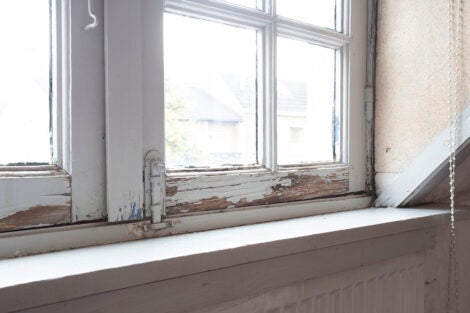May 1, 2024 – Although the use of lead in house paint and water pipes has long been banned in the U.S., there is still plenty of it around—in old lead pipes and old houses—and it continues to pose health risks. In children, lead can impair brain development. In adults, it can lead to high blood pressure and kidney damage.
In an April 18 Q&A in Reckon, Harvard T.H. Chan School of Public Health’s Mary Jean Brown discussed why lead still persists and what people can do to reduce their risk.
Brown, adjunct assistant professor of social and behavioral sciences, noted that lead is still a problem, in part, because “we have a tendency … to put one source of lead in competition with another.” Until 10 to 15 years ago, the focus was on the risk posed by lead paint, she said—but the focus needs to broaden. “We need to be proactive and remove lead from its sources, including pipes, paints, contaminated soil, and dust, especially around houses built before 1978 [when the use of lead in house paint was banned],” she said.
Certain food products can contain lead, too. Brown noted that it had recently been found in applesauce pouches. Other products from overseas, such as spices and traditional teas, may also contain lead. “The customs people are pretty good about testing things, but things slip through,” Brown said.
One way people can reduce risk is to check for lead paint on their walls, either by hiring a professional to do a lead paint inspection or by buying a do-it-yourself test kit. This is particularly important during any kind of house renovation, which can stir up lead dust, Brown said.
Read the Reckon Q&A: ‘It’s only been six weeks since they found lead in applesauce’
Photo: iStock/cerro_photography
